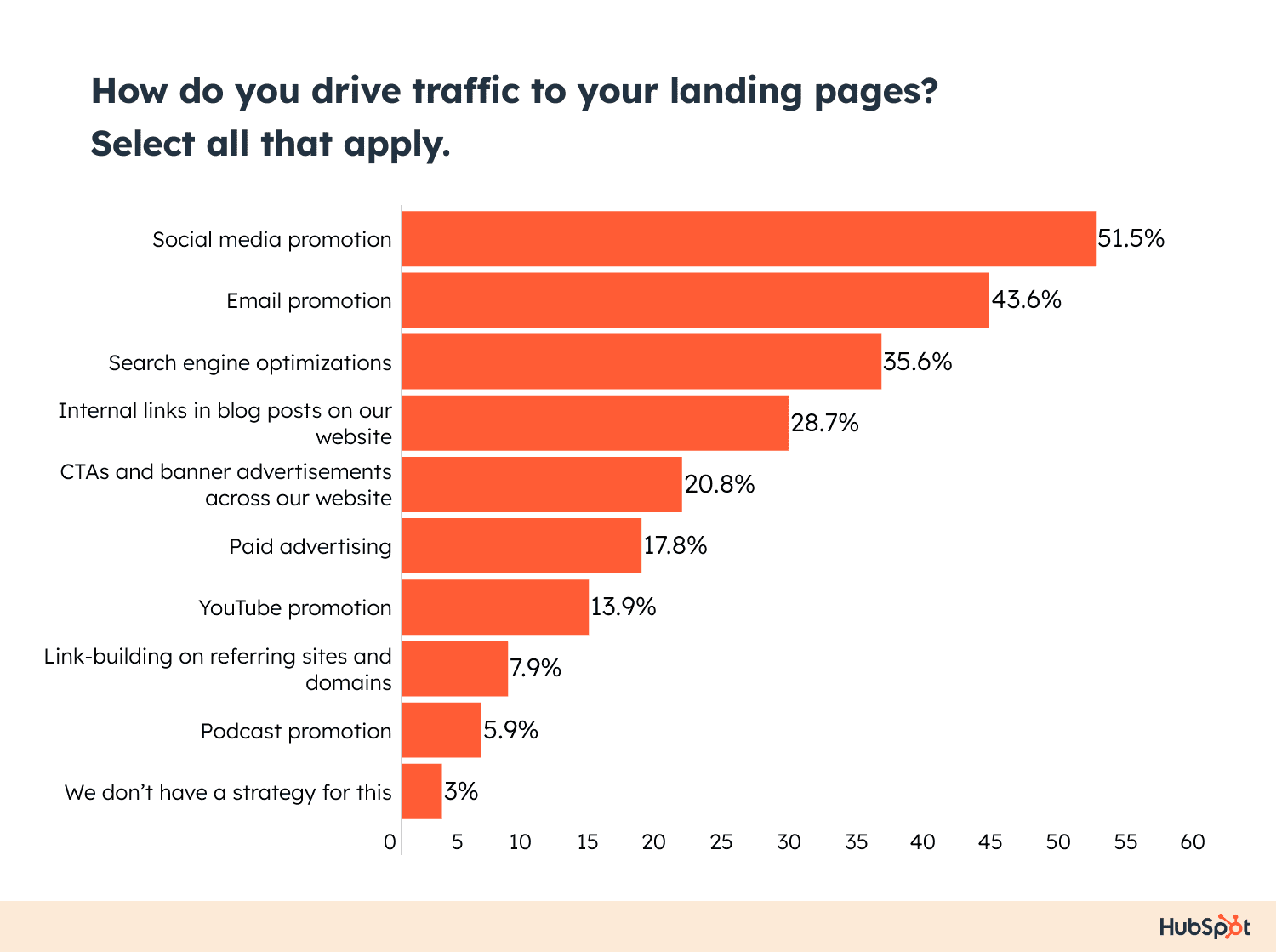For any business looking to drive growth online, landing pages are the crucial first step. These specialised pages allow you to showcase your brand, communicate your value proposition clearly, capture leads and move them down the sales funnel. Optimised landing pages lend credibility, build authority and shape the perceptions that matter to grow your business.
Our comprehensive guide will walk you through the key elements in creating high-converting landing pages that establish your brand effectively. We cover content strategy, design principles, conversion tactics, traffic driving techniques and analytics – equipping you to maximise impact. Let’s get started!
What is a Landing Page
A landing page on your website is a page created with the goal of turning users into leads. It is usually the first page a visitor will see when they land on your website, so it should be made to clearly communicate what you have to offer and entice them to explore further. Landing pages are frequently employed in marketing efforts and can be directed at target markets, such as new or repeat customers.
The landing page’s primary objective is to turn visitors into leads. Hence, a homepage with a form on it does not count as a landing page for example, because it serves other purposes as well!
Why Landing Pages Are Vital for Constructing Your Brand

While your website might be the main hub, landing pages act as the strategic entry points for specific campaigns or offerings. They provide a controlled environment to create a powerful first impression in the minds of potential customers. Let us take a closer look at the benefits of a good landing page for your business:
1. It helps build a strong first impression
Landing pages act as the digital first impression for potential customers engaging with your business online. As the entryway into your offerings, they make it easier for prospective customers to engage with your business online and experience your products or services.
2. It allows focused, benefit-led brand communication
By streamlining the focus onto specific products or services without other website distractions, landing pages relay your core value proposition. Visitors immediately understand what you provide and why it benefits them. This clarity boosts conversion rates.
3. It builds trust and authority for your brand
Additionally, landing pages showcase social proof elements like customer stories, awards won, and certifications achieved. These credibility indicators help strengthen your brand image and establish your business as a trusted authority.
4. It enables lead capturing through your sales funnel
The opt-in forms on landing pages also capture lead contact information when visitors download gated content like eBooks, tip sheets, or email courses. These leads seamlessly fuel your sales pipeline.
In essence, optimised landing pages increase brand visibility while conveying your unique selling proposition to each visitor. They enable forging lasting brand connections that drive business growth. Leveraging landing pages is key for small and medium enterprises seeking to creatively maximise online marketing success.
Optimising Landing Page Content
Optimising your landing pages for both clarity and user experience ensures a cohesive brand message is delivered consistently across touchpoints. This reinforces brand identity and fosters a positive association with your company in the minds of visitors.
Crafting compelling landing pages involves several key ingredients. Start with attention-grabbing headlines and subheadings that clearly communicate the benefits your offering provides. Use scannable, concise paragraphs that address your audience’s pain points and highlight your unique selling points. In fact, addressing buyer fears on landing pages can increase conversion rates by 80%. Guide visitors towards conversion with clear calls to action and build trust and credibility by incorporating social proof elements like testimonials, case studies, and industry recognitions. This comprehensive approach ensures your landing pages effectively capture attention, drive action, and ultimately, contribute to a strong and memorable brand experience.

Design Best Practices
With growing mobile usage, responsive design is vital for accessible and engaging landing pages. Templates should seamlessly adapt across mobile, tablet and desktop breakpoints. Good design therefore forms a critical pillar in how well your landing page responds. Intuitive page navigation allows quick access to sections. By balancing branding and usability, an aesthetically pleasing yet conversion-focused landing page can become a valuable lead generation tool.
Here’s your quick checklist to make sure your landing page design is on-point:
Design is not just about content placement and aesthetics. The heart of effective design is to make the user journey streamlined. groSamriddhi’s work with this paramedical education institute is a case in point on how we delivered over 8X times increase in paid engagements on their admission driven landing pages.
Conversion Optimisation Tactics
Converting interested visitors into leads is the core purpose of landing pages. To maximise results, implementing conversion rate optimisation (CRO) tactics accelerates transformations within your sales funnel. Every element on the page either helps users move closer towards becoming a customer or hinders progress through distractions and lack of clarity. Strategically optimising each component boosts lead captures exponentially.
Improving Page Loading Speeds
Fast page loads under three seconds lead to better user experience. Quick rendering retains visitor attention while slow speeds increase bounce rates. Compressing images, minimising third-party scripts, using caching plugins and optimising web hosting infrastructure are some ways to scale down page load time. Start by setting a measurable baseline to beat. Google’s real-world performance metrics – Core Web Vitals – is a good place to start. Prioritising Largest Contentful Paint under 2.5 seconds, First Input Delay under 100 milliseconds and Cumulative Layout Shift under 0.1 enhances user experience.
Using Minimalist Form Fields
Simplified, short sign-up forms reduce drop-offs within the conversion process through minimalist design. In a study of e-commerce brands, Omnisend found 3 has the magic number, i.e. if you had 3 form fields, it led to the highest conversion of 10% on the landing page. Only selectively asking for essential user details like email, phone number and job title shrinks effort needed to convert. Additional contextual inputs can also be gathered later from customers post-signup without hampering conversions.
Building Trust Through Signals
Adding trust symbols like security seals, privacy certifications and testimonials foster visitor confidence in sharing contact information. These social proof elements are visual signals establishing credibility to drive more opt-ins. Guaranteeing safety of user data through responsible data usage policies displayed clearly further eases privacy concerns hindering lead generation.
Enabling Streamlined CRM Integrations
Smoothly transferring lead contact information into customer relationship management (CRM) platforms through landing page integrations facilitates effective nurturing. Automated workflows send contextually relevant follow-ups while capturing meaningful customer demographics, history and activity from a unified interface. The continuity offered aids sales prioritization and closure.
Driving Traffic to Your Landing Page
Driving qualified traffic to aligned landing pages unlocks their conversion potential for generating business leads and sales. The quality and intent of visitors directly impacts opt-in and purchase rates. A multi-channel approach ensures steady volumes of interested prospects that engage further. A recent HubSpot study revealed that over 50% of businesses preferred social media as the most effective way to generate traffic to landing pages.

Let’s take a closer look at some of the most common approaches:
Optimising for Search Visibility
On-page and off-page SEO optimisation ensures landing page visibility in organic search results. Keyword optimised meta titles, headers, content, schema markup and backlinks from authority domains enable discovery by relevant queries.
Additionally, implementing Google’s structured data markup schema enhances landing page visibility by unlocking rich results placement. This includes featured snippets, images, reviews and video carousels above standard organic listings. Tailored schema markup adds branding, credibility and motivates clicks through dynamic assets.
Promoting on Social Media
Social media offers extensive reach to directly send visitors to offers promoted via organic posts or paid campaigns. Tailored copy and creatives tuned for platforms like Facebook, Instagram and LinkedIn encourage clicks while retargeting nurtures the audience.
Furthermore, Open Graph metadata enhances social media snippet previews with eye-catching images, headlines and descriptions. This entices profile visitors to click-through to landing pages at higher rates. Optimised titles, summaries and visuals boost organic reach for the URL across the social network through shares as well.
Paid Acquisition Through PPC/ Ads
Pay-per-click ads and retargeting campaigns within search engines and social media leverage user search and browsing behaviour signals to direct contextual traffic. Platforms like Google Ads and Facebook provide additional options like lead generation forms for gated offer promotion.
Driving Referral Traffic
First-party platforms like email newsletters, blog posts and website popups enable promoting landing pages for qualified organic referrals. Trackable links and UTM parameters aid measuring channel efficacy. Incentive driven promos also boost viral shares resulting in secondary referrals through sharing.
Analysing Performance Metrics
Gaining actionable insights from key landing page analytics is crucial for continual optimisation. Tracking metrics reveals underperforming elements hindering conversions and high-impact areas to maximise. Here are some of the metrics that you should consider tracking:
Monitoring Engagement Signals
Bounce rates and session duration metrics indicate overall landing page experience effectiveness. High bounce rates show content failing to engage visitors while short average session durations signal poor user experiences driving exits.
Evaluating Conversion Funnel Performance
Monitoring click-through rates on calls-to-action and drop-offs at each conversion funnel stage pinpoints specific weak points. Low CTRs show ineffective positional placement or copy while high fallouts indicate poor form UX or lack of motivation. Read more in our article on how you can use MarTech tools like Mixpanel to effectively analyse performance metrics across your entire customer funnel.
Assessing Lead Quality
Lead quality assessment through parameters like profile relevance, customer-fit and sales readiness helps segment highest potential opportunities for prioritized follow-ups. It prevents wasting resources chasing low probability prospects.
Reporting Source/Medium Conversion Contribution
Tracking conversion rates segmented by source and medium produces channel performance insights to double down on highest trafficked opportunities with the likelihood to convert. Metrics like cost per lead further help optimize paid efforts.
Using both micro and macro performance data funnels attention towards addressing problematic areas first while guiding Visitor segments exhibiting high conversion tendencies enable creating aligned experiences. Continual optimisation supported by metrics expands revenue generating customer acquisition.
Key Takeaways and Next Steps
Optimised landing pages are invaluable for small and medium enterprises seeking to cost-effectively build their brand online. They act as crucial entry points to engage customers through focused value communication. Conversion-centric design empowers showcasing your differentiators while leading visitors further down the sales funnel through smart calls-to-action placement.
Performance tracking provides data-driven insights to continually refine page content, traffic acquisition efforts and conversion tactics. By becoming lead generation hubs receiving qualified traffic, landing pages unleash exponential growth for emerging brands looking to creatively maximise online marketing success. Optimised landing pages combined with the current MarTech toolkit serve as critical customer acquisition tools for ambitious online brands.
If you are ready to take your business to the next step of growth, speak to us and discover how our performance marketing tools can work the magic for your business and revenue.




